
Station Name: NORWICH CITY[Source: Glen Kilday]
Norwich City Station Gallery 3: c early 1930s - 1949 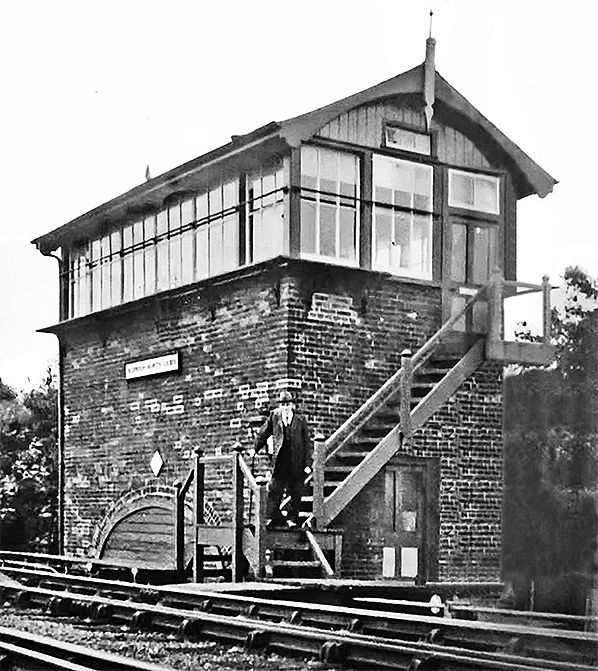
Norwich City at one time had two signal boxes, Norwich North and Norwich South. This damaged and repaired photograph is, at the time of writing, the only photograph of North box to have come to light. The box was located on the Down side of the line (Down being towards City station) just beyond Milepost 51 and opposite what is now Wensum Park. North and South boxes were broadly similar, the major differences being the steps of North box being at the opposite end to those of South box and the latter having locking room windows. Both had the characteristic gables found on many M&GN boxes. Norwich North was decommissioned and demolished in 1934, most of its functions being transferred to South box but a replacement Ground Frame was provided, apparently in a hut, for the remaining functions. Following this, the remaining box lost the 'South' suffix. The Ground Frame was unlocked by South box but by what means is unclear. Details of the frame installed in North box are not known, nor is the identity of the gentleman on the steps.
Photo from Jim Lake collection 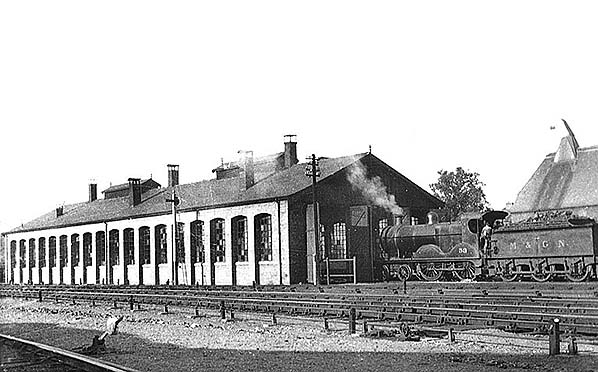
The large three-road engine shed at Norwich City as it was in 1935. It suffered total destruction in air-raids in April 1942. The locomotive outside the shed was M&GN No. 53, one of Johnson’s Class C 4-4-0 engines. It later became LNER Class D54. It was built in 1896 by Sharp Stewart & Co., Works No.4192 and, in 1910, rebuilt with a Belpaire boiler. It was further rebuilt in 1925 and in July 1937 became LNER No.053. Withdrawn from South Lynn shed in January 1940.
Photo from John Mann Collection. Locomotive information from Transports of Delight website with thank 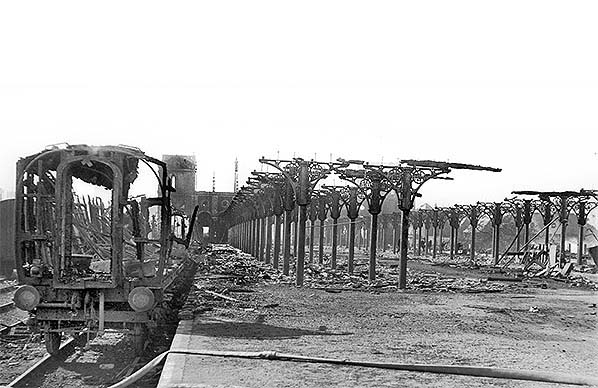 For five successive nights from 27 April 1942 the city of Norwich was subjected to massive aerial bombardment by the German Luftwaffe This is the scene at Norwich City on 28 April. Compare the image with those of 1901 and 1912 and the picture of almost total devastation requires no further explanation.
Photo from Jim Lake collection 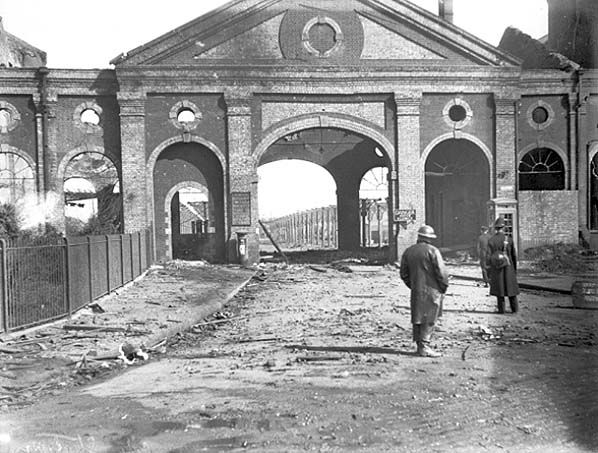
The view from Station Road, Norwich City station, on 28 April 1942, following the previous night’s air-raids, as reported by the Eastern Daily Press.
Photo copyright Archant Library / EDP 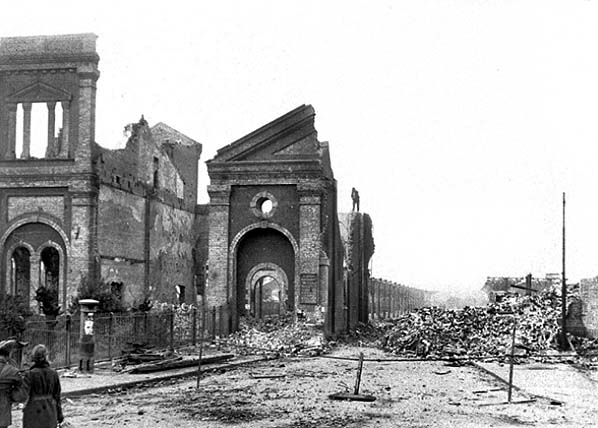
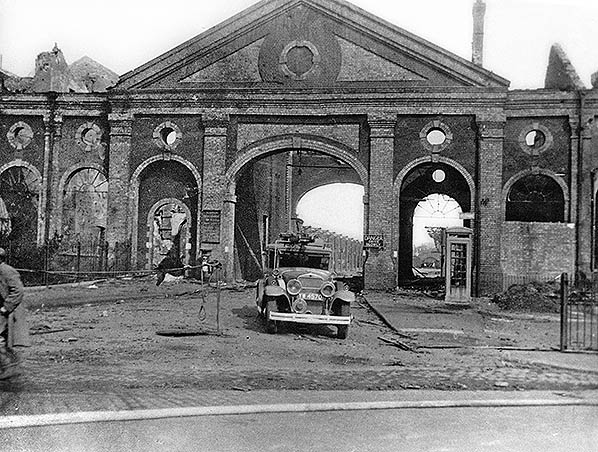
The once-grand entrance arch at Norwich City as it was at the end of April 1942. Empire, right hand drive Studebakers, were assembled in Canada from parts supplied from the USA and the vehicles shipped over. This may have been complete or as a rolling chassis on which British coach builders would have supplied bodies to the requirements of customers. That in the picture appears to be one of those shipped over complete. The registration number dates the vehicle to 1928. The model is a little more difficult to determine but it is probably a 'Dictator' as it carries that model's style of bumper and grille. With the coming to power of Adolf Hitler the name was decided as being unsuitable for the European market so it came to be known as either the 'Commander' or the 'President'. Note the masked nearside headlamp and the fog lamp. The offside headlamp is unmasked and would have had its bulb removed - common practice in wartime. A K3 telephone kiosk is seen on the right.
Photo from John Mann collection 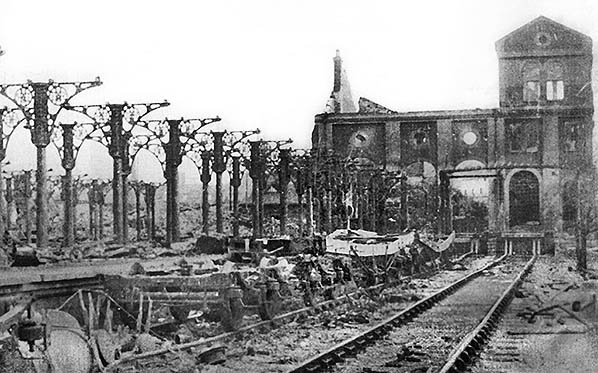 Passenger carriage underframes stand in the west platform at Norwich City at the end of April 1942 with the bomb-destroyed station building behind. The platform canopy supports survived the enemy attacks but most were removed when the station was rebuilt,
Photo from Jim Lake collection 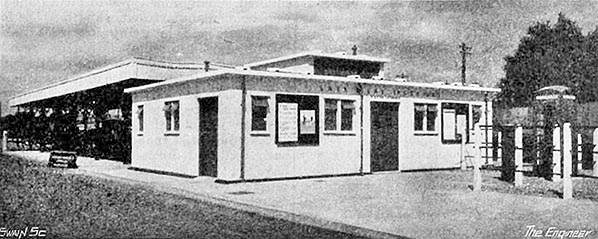 Following air raid damage in 1942 the station was rebuilt and reopened as seen in this 1945 photo.
Photo from Grace's Guide 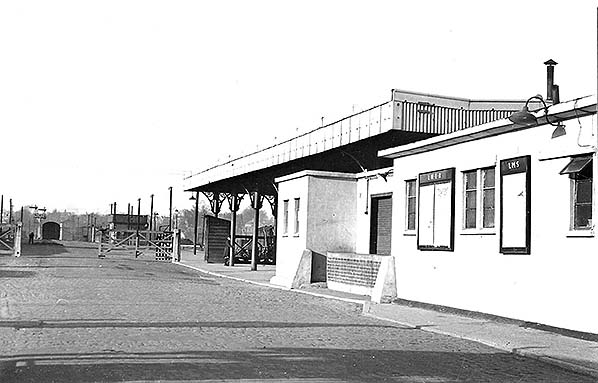
City station had been cleared of wartime destruction by 1948 and its grand buildings replaced by utilitarian concrete slab structures remodelled from LNER lineside huts. The cobbled road once passed under the arched entrance to the platforms. It is notable that the LNER and LMS retained separate notice-boards.
Photo from John Mann collection
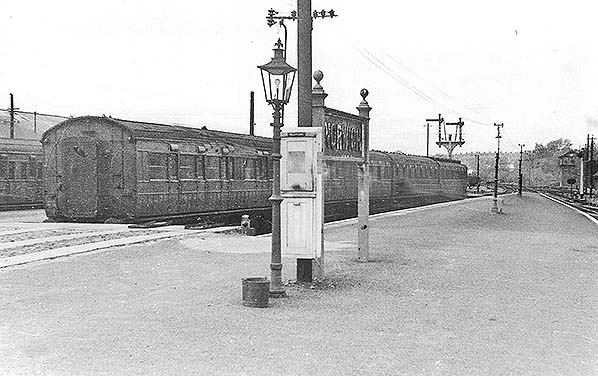
A view of the bay platforms at Norwich City taken in April 1949. The station had always been called simply ‘Norwich’ by the Midland & Great Northern. The South signal box, by then the station’s only ‘box, can be seen in the distance.
Photo from John Mann collection 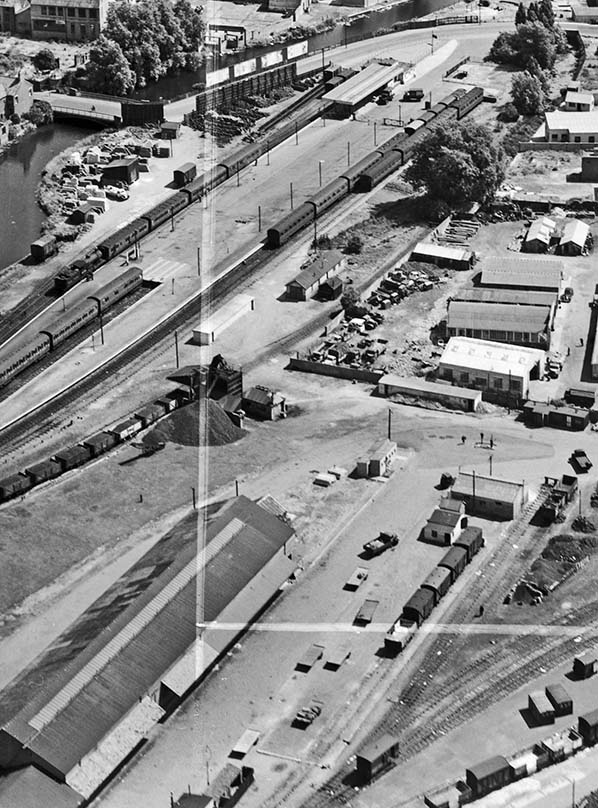
An aerial view of Norwich City station in 1949 looking towards the south-east. The post-war minimalist station buildings were in place and the platform areas, previously substantially covered by canopies, were open and offered no shelter. In the foreground the goods shed roof had been repaired following bomb damage. The locomotive in the eastern platform has possibly run round an arriving train and is about to move the empty coaches from the platform. Click here for a larger version.
Copyright photo from Britain From Above, reproduced with permission 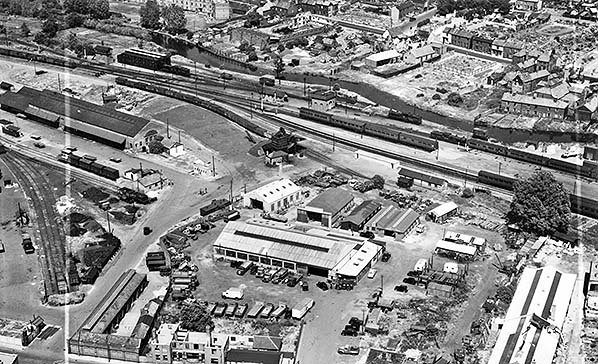 Norwich City seen from the air, looking to the north-east in 1949. In the lower left the horse stables lay at the entrance from the road and there is visible bomb damage on the adjoining property. Note the weighbridge at the entrance to the goods yard, opposite the stables. We can see the 1944 replacement engine shed, much smaller than the original. Norwich City signal box is seen to the left of the shed. The three locomotives in view all appear to be ex-Great Eastern 4-4-0 and 0-6-0 types. Click here for a larger version. Norwich City seen from the air, looking to the north-east in 1949. In the lower left the horse stables lay at the entrance from the road and there is visible bomb damage on the adjoining property. Note the weighbridge at the entrance to the goods yard, opposite the stables. We can see the 1944 replacement engine shed, much smaller than the original. Norwich City signal box is seen to the left of the shed. The three locomotives in view all appear to be ex-Great Eastern 4-4-0 and 0-6-0 types. Click here for a larger version.Copyright photo from Britain From Above, reproduced with permission
|

 Home Page
Home Page